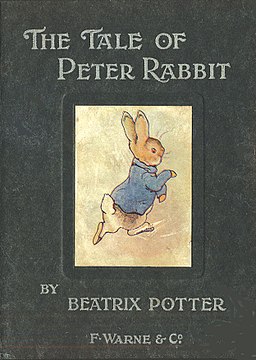 |
| By Charles G.Y. King (1854-1937) [Public domain], via Wikimedia Commons |
Her entire literary canon consists of over 30 books, including the 24 tales that continue to captivate and delight succeeding generations of young children. And it doesn't end there. In 2015, an almost completed, unpublished manuscript was discovered among her archives. The Tale of Kitty-in-Boots is due to be published later this year, in September, by Frederick Warne & Co, the publisher of the original series of Potter's children's tales though these days, it operates as an imprint of Penguin Books.
Potter's work is most clearly influenced by an abiding passion for natural history, which was nurtured from an early age and stayed with her throughout her life. When she eventually gave up writing, it was to devote herself to farming and country living. She is credited with preserving much of the land that now constitutes the Lake District National Park in North West England. Upon her death, in 1943, she left most of her property to the National Trust.
Although she herself died childless, her writing style lends itself well to young audiences. Her deep and abiding interest in the natural sciences is conveyed in a manner that is lively, inventive and refuses to be dull, packed as it is with a sense of earthy realism.
 |
| Beatrix Potter [Public domain], via Wikimedia Commons |
The first editions of The Tale of Peter Rabbit were self-published by Potter, until she found a publisher who not only saw the potential, but also shared her vision for 'the bunny book' as it was called. This finally happened in October 1902, following numerous rejections, both from publishers but also from Potter herself, who was initially hesitant about adding colour illustrations to the story.
It proved to be the right decision. Colour illustration was becoming both popular and affordable and the book was an overnight success. Today, it has been translated into 36 languages and is estimated to have sold over 45 million copies worldwide.






No comments:
Post a Comment